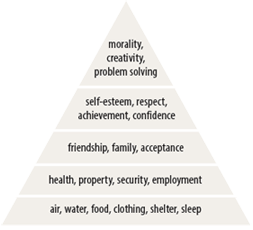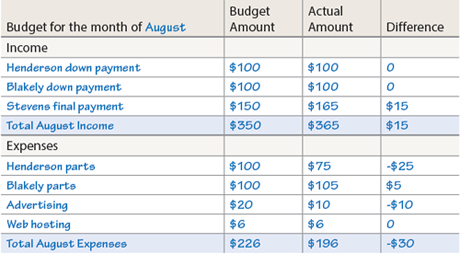Gaining Entrepreneurial Skills

Entrepreneurs create business opportunities for themselves and for the people they will likely hire. By developing entrepreneurial skills, you may one day be able to create your own business and chart your own future.
Identifying a Need
Most businesses have the goal of solving a problem or filling a need that people have, and the natural result is that people buy the product or service that the business offers. The pyramid to the right, developed by Abraham Maslow, organizes the needs of people. Notice how McDonalds meets one of the most basic needs, State Farm meets a need on the next level up, Facebook one level above that, and so on.
Matching Needs to Your Skills and Passions
After identifying a need, consider what skills you have to meet the need. What are you passionate about that can help people? (Your passions connect to the highest level of the pyramid and tap into your problem-soving skills.) Then list the products you could make or the services you could offer to meet this need. In the following example, a student brainstormed products and services that related to the need for “health.”

Your Turn Choose one of the needs from the pyramid above. Then think about the skills and passions you have, and how they intersect with that need. Brainstorm a list of things you could make (products) and do (services) that would meet that need. Think of as many solutions as you can, even if some seem impractical. Finally, choose one or more of your ideas to consider as business ventures.
Planning a Product or Service
Once you have an idea for a product or service that would meet a need and that matches your skill, you can take your idea to the next level by filling out a planning sheet. (See pages 355–362 for more information.)

Your Turn Fill out a planning sheet for your idea. (Go to thoughtfullearning.com/h330 to download a blank form.)
Pricing
Devon will need to decide how much to charge for his custom-built recumbent bikes. If his prices are too low, he won’t be able to cover parts and labor. If his prices are too high, no one will buy the bikes. He must also consider the following factors:
- Value: What is a custom-built recumbent bike worth? Do people want inexpensive bikes built from old parts, or shiny new bikes at a premium cost?
- Competition: Who else in the area sells recumbent bikes? Who else builds custom bikes? What do competitors charge?
- Market: How much will people pay for a recumbent bike?
- Return on investment: What price will make it worth the effort?
Your Turn Consider the price you would set for your product or service. What value does this product or service hold for people? What does the competition charge? What will the market bear? Will you get a good return on your investment?
Budgeting
Part of operating a business is managing money. You need to start with an initial investment, perhaps money you have saved up from other work or money from a parent or guardian. The next step is setting up a budget, which is a list of the expected income and expenses for your business. Here is an example budget. (See chapter 18 for more information.)

Your Turn Create a budget like the one above for your business idea. (See also page 308.) Write down how much money you expect to take in to your business. Then write down how much money you expect to pay out. As your business moves ahead, keep track of the money you take in and the money you spend. Then use that information to update your budget periodically.
